Glossary 1

-
~contemplation~
The word, contemplation, is often used loosely as referring to a forced mental process, whereas samadhi lies beyond effort. However, in the language of Christian mysticism “contemplation” is the synonym invariably used for samadhi, and it is in this sense the word is used here.
-
Aaroodha
Self-Realized, One who abides in the Self
-
Abhyasa
Practice. Spiritual practices. Self-Enquiry, Meditation, Contemplation. -
Advaita
Advaita means nondual or "not two." This oneness is a fundamental quality of everything. It is the one Real Being. Advaita (Sanskrit); not-two, "no second") refers to the idea that the true Self, Atman, is the same as the highest Reality, Brahman. It gives "a unifying interpretation of the whole body of Upanishads", providing scriptural authority for the postulation of the nonduality of Atman and Brahman. Followers seek liberation/release/salvation by acquiring vidya (knowledge)[of the identity of Atman and Brahman. It emphasizes Jivanmukta, the idea that moksha (freedom, liberation) is achievable in this life.
-
Advaita
Advaita Vedanta is a school of Hindu philosophy and religious practice, and one of the classic Indian paths to spiritual realization. Advaita (Sanskrit: not-two, "no second") refers to the idea that the true Self, Atman, is the same as the highest Reality, Brahman. It gives "a unifying interpretation of the whole body of Upanishads", providing scriptural authority for the postulation of the nonduality of Atman and Brahman. Followers seek liberation/salvation by acquiring vidhya (knowledge) of the identity of Atman and Brahman. It emphasizes the Jivanmukhta, the idea that moksha (freedom, liberation) is achievable in this life. Please visit this site for further info. -
Aham
Self; I AM. -
Ahimsa
~~~ Non-injury. Principle of non-violence towards everyone including animals. Ahimsa's precept of 'cause no injury' includes one's deeds, words, and thoughts. -
Ajnani
A Soul who is ignorant of his Real Blissful Self. One who does not know and abide in the Real Self. -
Ananda
Happiness; Bliss. -
Anandamaya
Blissful; Filled with Happiness. -
Anatma
Non-self -
Annamalai
It is the name for Arunachala in Tamil. -
Annamaya
Made up of food; composed of food. -
Anthara
Inner; inward -
Aradhana
Worship of God. -
Ardhanareeswara
~~~ Lord Shiva and Goddess Parvati in the form of half man and half woman united as one Being. [caption id="attachment_3776" align="aligncenter" width="300"] Ardhanareeswara-form-of-shiva-parvati[/caption]
Ardhanareeswara-form-of-shiva-parvati[/caption]
-
Arjuna
~~~ Arjuna was the 3rd of the Pandava brothers. He was a brave, triumphant warrior. He is considered as the protagonist of the Mahabharata with Krishna and plays a key role in the Bhagavad Geeta. [caption id="attachment_3803" align="aligncenter" width="390"] Arjuna[/caption]
Arjuna[/caption] -
Arul
Tamil word "Arul" means Grace of God or Guru. -
Arunachala
Arunachala (Aruṇācala, "red mountain") refers to the holy hill at Tiruvannamalai in Tamil Nadu, India. The hill is also known by the names Arunagiri, Annamalai Hill, Arunachalam, Arunai, Sonagiri and Sonachalam. It is one of the five main shaivite holy places in South India. The Annamalaiyar Temple, a temple of Lord Shiva is located at the base of the hill. Every year in the Tamil month of Karthigai (October–November), the Karthigai Deepam (Light) is lit atop the hill. It is also an important place for devotees of Sri Ramana Maharshi with Sri Ramana Asramam situated at its foothills. -
Arunachala Ashrama
~~~ Arunachala Ashrama is located in New York, USA. It is dedicated to the Life and Teachings of Bhagavan Sri Ramana Maharshi.
-
Asana
Pronounced "aasana". Posture; sitting position for meditation; yoga exercise. -
Asat
False; Unreal -
Ashram
~~~ Traditionally, an ashram is a spiritual hermitage, a monastery, a monastic community, or a place of religious retreat for Hindus.
-
Ashramas
The four Ashramas are orders or stages of life. They are Brahmacharya (Youth/Bachelor - dedicated towards education and development of strong values), Grihastha (Householders - maintaining a good, happy family and being a good example for children and society), Vanaprastha (Retirement - having completed one's duties, taking to contemplation, guidance and peaceful activities), and Sannyasa (Renunciation - giving up attachment to worldly, material desires to achieve oneness of the soul with the supreme being).
-
Athirai
Athirai is the day on which the moon is in conjunction with the constellation Ardra. -
Atman
Ātman (pronounced Aatman) means the Self as Being, Consciousness, Bliss. It is a Sanskrit word that means inner self or soul. In Hindu philosophy, especially in the Vedanta school of Hinduism, Ātman is the first principle, the true self of an individual beyond identification with phenomena, the essence of an individual. In order to attain liberation, a human being must acquire self-knowledge (atma jnana) which is to realize that one's true self (Ātman) is identical with the transcendent self Brahman.
Please visit this site for further info. -
Avidya
~~~ Ignorance. Not Knowing one's true Self. -
Bhagavad
Holy, Divine, Godly
[caption id="attachment_2055" align="alignnone" width="300"]
 Bhagavad[/caption]
Bhagavad[/caption] -
Bhagavad~Gita
The Bhagavad Gita is a 700-verse Hindu scripture in Sanskrit that is part of the Hindu epic Mahabharata. The Gita is a dialogue between Pandava prince Arjuna and his guide and charioteer Lord Krishna. Arjuna faces the duty as a warrior to fight a righteous war between Pandavas and Kauravas. Lord Krishna guides him to fulfill his duty and establish Righteouness. He also offers methods toward the attainment of Liberation through Jnana, Bhakti, Karma, and Raja Yogas.

-
Bhagavan
God; Lord. An enlightened Sage is considered God's incarnation, and so is called Bhagavan. ~~~
-
Bhajan
Devotional Song. A Bhajan is any type of Indian devotional song. It has no fixed form: it may be as simple as a mantra or kirtan or as sophisticated as the dhrupad or kriti with music based on classical ragas and talas. It is normally lyrical, expressing love for the Divine. The Dhrupad style, Sufi qawwali and the kirtan are related to bhajan. Bhajans by Kabir, Mirabai, Surdas, Tulsidas and a few others are considered to be classic.
-
Bhakta
Devotee -
Bhakti
Devotion to God; Intense Love for God. To one devotee, Ramana says "The longing for happiness never fades. That is Bhakti".
-
Bhoominatheswara
Name of Lord Siva as consecrated in Thiruchuli. -
Bodha
Knowledge -
Brahmaakaara
Associated with Brahman, the True Self. -
Brahmachari
~~~ Swami Chinmayanda says that this word has been misunderstood and misused. It is usually taken to be one who is celibate. But the real meaning is : One who is in touch with his Real Self, who has good control of his mind and senses and is equanimous under all circumstances. -
Brahman
Supreme Spirit; Attributeless Reality. In Hinduism, Brahman (Sanskrit: ब्रह्मन्) connotes the highest Universal Principle, the Ultimate Reality in the universe. In major schools of Hindu philosophy it is the material, efficient, formal and final cause of all that exists. It is the pervasive, genderless, infinite, eternal truth and bliss which does not change, yet is the cause of all changes. Brahman as a metaphysical concept is the single binding unity behind the diversity in all that exists in the universe.
Please visit this site for further info. [caption id="attachment_2969" align="alignleft" width="300"] Brahman[/caption]
Brahman[/caption] -
Buddha
The word Buddha means "awakened one" or "the enlightened one". The usual pronunciation "Booda" by non-Hindus and non-Buddhists is wrong. One should learn the correct pronounciation from a Hindu or a Buddhist. Sri Gautama Buddha also Siddhartha, is an Enlightened Hindu Sage of India who offered his guidance and teachings which are now called Buddhism.
[caption id="attachment_3318" align="aligncenter" width="250"] Buddha[/caption]
Buddha[/caption] -
Buddhi
Mind; Intellect -
Chit
Consciousness; Awareness. -
Darsan
-
Deva
Lord or God -
Devikalottaram
Sri Ramana Maharshi'ss Introduction to Devikalottaram
This work is one of the upa-agamas and explains the supreme wisdom to be attained by mature souls and their mode of life expounded by the Supreme Lord Siva to Devi Parvati.
It is the essence of all agama sastras on matters of spiritual knowledge. This is verily the boat which can rescue the mortals struggling hard, sinking and rising, in the sorrowful ocean of samsara - the endless cycle of birth and death - and take them by the direct path to the shore of liberation.
Let all earnest seekers after Truth, instead of groping in the dark, bewildered, and losing their way, adopt the aid of this direct path and reach the supreme state of bliss and peace. -
Dhatu
Constituent element; component. -
Dhyana
Meditation; Contemplation; Keeping off thoughts. Dhyana also means fight with the force of crowded thoughts to hold a single good thought.
-
Drik
Seer; the one who sees the world and objects other than oneself. -
Drishti
Drishti : (Sanskrit) Focused gaze, or View. -
Drisya
What is seen; the world and the objects seen by the one who sees. -
Fakir
Hermit; renunciate; religious ascetic who lives solely on alms. -
Fanatic
A Fanatic is a person filled with excessive and single-minded zeal, especially for an extreme religious or political cause. Synonyms: zealot, extremist, militant, dogmatist, adherent; sectarian, bigot, partisan, radical, diehard. informal: maniac, "a religious fanatic" -
Ganesha
Also popularly known as Vinaayaka, although he is known by many attributes, Ganesha's elephant head makes him easy to identify. Ganesha is widely revered as the remover of obstacles, the patron of arts and sciences and the Lord of intellect and wisdom. As the God of beginnings, he is honoured at the start of rituals and ceremonies. Ganesha is also invoked as patron of letters and learning during writing sessions.
-
Gayatri
Gayatri is from the Rig Veda of the Hindu culture. Meaning: The beginning, middle and end of all beings (OM), The Illuminator of the Earth, Interspace and Heavens,1 I meditate upon That Great Venerable Adorable Sun. May that self-luminous, radiant and divine Light, illumine and inspire my intellect in the right direction. 1 Symbolically they mean the Waking, Dream and Deep Sleep states. The Gayatri mantra in Devanagari: ॐ भूर्भुवः स्वः । तत्स॑वि॒तुर्वरेण्यं॒ भर्गो॑ दे॒वस्य॑ धीमहि । धियो॒ यो नः॑ प्रचो॒दया॑त् ॥ om bhūr bhuvaḥ svaḥ tát savitúr váreṇyaṃ bhárgo devásya dhīmahi dhíyo yó naḥ prachodayāt – Rig Veda (Mandala 3.62.10) -
Geeta
The Bhagavad Gita is a 700-verse Hindu scripture in Sanskrit that is part of the Hindu epic Mahabharata. The Gita is a dialogue between Pandava prince Arjuna and his guide and charioteer Lord Krishna. Arjuna faces the duty as a warrior to fight a righteous war between Pandavas and Kauravas. Lord Krishna guides him to fulfill his duty and establish Righteouness. He also offers methods toward the attainment of Liberation through Jnana, Bhakti, Karma, and Raja Yogas.

-
Genie
Genie is a spirit of Arabian folklore,as traditionally depicted imprisoned within a bottle or oil lamp, and capable of granting wishes when summoned. Origin:mid 17th century (denoting a guardian or protective spirit): from French génie, from Latin genius (see genius). Génie was adopted in the current sense by the 18th-century French translators of The Arabian Nights' Entertainments, because of its resemblance in form and sense to Arabic jinnī ‘jinni.’
-
Gopuram
Gopuram is a monumental tower, usually ornate, at the entrance of any temple, especially in Southern India. This forms a prominent feature of 'Koil's, the Hindu temples of the Dravidian style. Gopuram Goddess Sri Meenakshi Temple Tower
Goddess Sri Meenakshi Temple Tower

-
Grihasta
Householder. One who takes care of household duties and responsibilities. -
Grihastha Dharma
~~~ The duties of a householder. -
Grihi
Householder; one who leads a life with a home and family. -
Grihini
Housewife; a woman who performs the duties of a householder. -
Gunas
Guṇa, depending on the context means 'string, thread or strand', or 'virtue, merit, excellence', or 'quality, peculiarity, attribute, property'. There are three guṇas. They are called: sattva (goodness, constructive, harmonious), rajas (passion, active, confused), and tamas (darkness, destructive, chaotic). All of these three gunas are present in everyone and everything, it is the proportion that is different. The interplay of these gunas defines the character of someone or something, of nature and determines the progress of life. In some contexts, it may mean 'a subdivision, species, kind, quality', or an operational principle or tendency of something or someone. In human behavior, Guna means personality, innate nature and psychological attributes of an individual. -
Guru
Guru: a Teacher, Master, an Enlightened Being particularly in Indian religions. The Hindu guru-sishya (teacher-student) tradition is the oral tradition or religious doctrine or experiential wisdom transmitted from teacher to student. In the present times, Guru could mean anywhere from an expert in a certain field to a Spiritual Master.

-
Heart
Ramana Maharshi's explanation of HeartMaharshi: Heart is usually understood to be the muscular organ lying on the left of the chest. The Modern Psychological Review speaks of the physical organ on the left and the Heart centre on the right. The Bible says that a fool’s heart is on the left and a wise man’s on the right. Yoga Vasishta says that there are two hearts; the one is samvit (Existence/Intelligence/Awareness); and the other the blood-vessel.
Maharshi: I ask you to see where the ‘I’ arises in your body, but it is really not quite correct to say that the ‘I’ rises from and merges in the Heart in the right side of the chest. The Heart is another name for Reality and it is neither inside nor outside the body. There can be no in or out for it, since it alone is.
Maharshi: The Heart is used in the Vedas and the scriptures to denote the place from where the notion ‘I’ springs. Does it spring only from the fleshy ball? It springs within us somewhere right in the middle of our being. The ‘I’ has no location. Everything is the Self. There is nothing but that.
-
Homa
~~~ Homa refers to any ritual in which making offeringsinto a consecrated fire is the primary action. It involves the kindling and consecration of the sacrificial fire;the invocation of one or more divinities; and, the making of offerings (whether real or visualized) to them with the fire as the medium, amidst the recitation of prescribed prayers and mantras.
[caption id="attachment_3096" align="alignnone" width="432"] Homa[/caption]
Homa[/caption] -
Isvara
In ancient texts of Indian philosophy, Isvara means supreme soul, Brahman (Highest Reality). In medieval era texts, Isvara means God, Supreme Being, personal god, or special Self. In Saivism, Isvara is synonymous with "Shiva".
-
Isvaratva
Omnipotence. The quality of having unlimited or very great power. Eg. "God's omnipotence". It is all-powerfulness, almightiness, supremacy, preeminence, supreme power, absolute power, unlimited power, invincibility.
-
Iswara
In a general sense, Iswara or Eeswara means God. In a particular sense, it means Lord Shiva, the "Destroyer of Sorrows and one who provides Cosmic Balance".
He is one of the Hindu Trinity, that includes Vishnu as the "preserver" and Brahma the "creator". Lord Shiva is identical to the formless metaphysical concept called Brahman, the Supreme. -
Jagrat
~~~ One of the three states of existence. Jagrat is the Waking State. Swapna is the Dream State while Jagrat is the Waking State and Sushupti is the Deep Sleep State. -
Jagrat~Sushupti
Jagrat: Waking State. Sushupti: Deep Sleep. Jagrat~Sushupti: Experiencing the peacefulness of deep sleep in the waking state. -
Japa
Japa is the chanting of a Name or Mantra (a sacred word or phrase consecrated as sacred and beneficial for the Spiritual Path). It is an aid to help concentration of the mind and helps focus on a single thought to quieten the mind and prevent it from wandering into its favorite worldly thoughts and objects, which in turn produces peace of mind, tranquility and happiness. This also enables one to gain strength of mind to tackle the daily activities efficiently, unperturbed and with focus.
-
Jiva
~~~ Individual Self; soul; a person
-
Jnana
Knowledge, Self-Realization, Knowledge of the Real Self. -
Jnani
One who has attained Self-Realization. A wise, all-knowing, enlightened Being.

-
Kama
Kama pronounced Kaama means Passion, Desire. -
Karma
Karma means action, work or deed.
Karma also stands for the consequences of a mental or physical activity.
In Hinduism and Buddhism, Karma denotes the sum of a person's actions in this and previous states of existence, viewed as deciding their fate in future existences.
It refers to the spiritual principle of cause and effect where intent and actions of an individual (cause) influence the future of that individual (effect).
Good intent and good deeds contribute to good karma and future happiness, while bad intent and bad deeds contribute to bad karma and future suffering.
-
Kartikeya
Kartikeya means son of krittikas (angels), where the sanskrit word "krittika" means creativity. Kartikeya is the manifestation of God as the commander-in-chief of the Devas (divine deities). He is also known by several other names, one of them being Murugan. The several names would include the following: Senthil, Vēlaṇ, Kumāran ("prince, child, young one"), Swaminatha ("ruler of the gods"), Saravanan ("born amongs the reeds"), Arumugam or Shanmuga ("six-faced"), Dandapani ("wielder of the mace-weapon"), Guhan or Guruguha ("dweller of the Heart-Cave"), Subrahmanya, Kadhirvelan, Kandhan, Kartikeya ("son of the Krittikas") and Skanda ("attacker"). He was also known as Mahasena.
-
Kosa
Sheath; Layer. -
Krishna
~ Krishna : A supreme deity, worshipped in Hinduism, the eighth incarnation (avatar) of Lord Vishnu, and same as Lord Vishnu, one of the Trimurti (three great forms of God - the other two being Lord Shiva and Brahma (Creator)). Krishna guides Arjuna in the Bhagavad Gita known as the Song of God.
-
Kriya
Work; Action -
Krodha
Anger, Wrath, Fury, Rage -
Mahamaya
The Great Illusion -
Mahavakya
A vakya is a Vedic utterance. Mahavakya means ‘great utterance’. Of all these, four are especially distinguished. "tattvamasi" (‘You are That’) is one of them. -
Maheswara
In a general sense, Maheswara means the Great God. In a particular sense, it means Lord Shiva.
-
Manomaya
Made up of mind; composed of mind. -
Mantra
Mantra is (originally in Hinduism) a word or sound repeated to aid concentration in meditation and purification of the mind. It is a word, statement or slogan repeated frequently. It can also be a Vedic hymn.
-
Marga
-
Mauna
Silence, Mental Silence, Inner Tranquillity ~~~
-
Maya
~~~ The Great Illusion that projects the world and veils our Real Self. To remove this illusion and realize one's Blissful, Immortal Nature, Self-Enquiry in the manner of "Who am I ?" becomes essential and the most effective and direct means.
-
Mlechcha
Mleccha (from Vedic Sanskrit म्लेच्छ mleccha, meaning "barbarian"), also spelled Mlechchha or Maleccha, is a name, which was used by the ancient Indians to indicate the uncouth and incomprehensible speech of foreigners who were "impure and barbarian" people.
-
Mukta
Liberated; Self Realized -
Mukti
Spiritual Liberation, Human Salvation. -
Murti
-
Namaskaram
~~~ Namaskar to God: It is Offering of Worship to the Almighty SELF with a humble attitude. Namaskar to People: It is Offering of Worship to the SELF in all. It is also an offering of respect to the person. [caption id="attachment_2167" align="aligncenter" width="185"] [/caption]
[/caption]
-
Nandi
The symbol of Nandi is the Sacred Bull always remaining before Siva in any temple. Nandi is considered the vehicle of Lord Siva. Nandi is also symbolized as the guardian of the holy temple.
-
Nidithyasana
Meditation, Self-Enquiry. Nididhyasana constitutes the methods of actual practice of the knowledge acquired through Sravana (Listening, Reading, Assocation with the Wise) and the consequent thorough understanding and assimilation of that knowledge through Manana (Understanding). -
Nirasana
Giving up. Casting out, driving away, expelling, removing, rejecting -
Nirvana
Salvation; Self-Realization; Oneness with the Reality without attributes. -
Om
Om (Auṃ or Oṃ, Sanskrit: ॐ) is a sacred sound and a spiritual icon in Indian religions. It is also a mantra in Hinduism, Buddhism and Jainism.
It is constituted of the sounds A (Aah), the deepest sound from within, U (Ooh) the middle sound from the throat, and M (Im) the sound from the outermost lips. Thus it denotes the Absolute Reality as the Beginning, Middle and End of all Beings. They also correspond to the waking, dream and deep sleep states of existence.
In Hinduism, Om is a most important spiritual symbol (pratima). It refers to Atman (soul, self within) and Brahman (ultimate reality, entirety of the universe, truth, divine, supreme spirit, cosmic principles, knowledge). It is a sacred spiritual incantation made before and during the recitation of spiritual texts, during puja and private prayers, inceremonies of rites of passages (sanskara) such as weddings, and sometimes during meditative and spiritual activities such as Yoga.
-
Pandit
~~~ Pandit refers to a Hindu who has memorized a substantial portion of the Vedas, along with the corresponding rhythms and melodies for chanting religious verses or singing them during prayers or rituals. In modern times it broadly refers to a scholar, an expert and authority in a certain field. [caption id="attachment_3303" align="aligncenter" width="480"] Pandit[/caption]
Pandit[/caption] -
Para Bhakti
Para bhakti is a Sanskrit term referring to devotion that transcends all worldly concerns and is pure, transparent and simple. It generally refers to devotion to the Divine, or God, and is a supreme state of love and respect.
-
Pitris
The Pitris (Sanskrit: पितृ, the fathers), are the spirits of the departed ancestors in Hindu culture. They are often remembered annually. -
Pranayama
Pranayama in Hindu Yoga is the regulation of breath through certain techniques and exercises. It is a conscious prolongation of inhalation, retention and exhalation. 'Prana' pronounced 'Praanaa' is the Life Energy, both individual and universal. If breath is controlled, mind is controlled and becomes quiet and vice versa. It is used as an aid to meditation, relaxation, calming the mind and general health.
-
Prapatti
Self-Surrender; Surrender to God.
-
Prarabdha
Prarabda is one's destiny to be worked out in this life, resulting from the balance sheet of "results from actions" in past lives. There are three kinds of Karma (actions and results from actions). Prarabdha, Sanchita and Agama. Prarabdha Karma is the Karma currently being lived and worked out, resulting from past actions and desires. Sanchita Karma is the accumulated "results of actions" to be played out in due course. Agama Karma is the Karma that is created by the way one lives the current life, by the prospective results of one's actions and the desires they retain.
-
Prasad
Blessing from God or Guru; the food or drink that is offered to the devotees after being used for worship of God. -
Purusha
Person; Man -
Purvapaksha
Previously achieved; so far attained -
Rajas
Rajas is the force which promotes or upholds the activity of the other aspects of nature (prakriti) such as one or more of the following: action, change, mutation; passion, excitement; birth, creation, generation. If a person or thing tends to be extremely active, excitable, or passionate, that person or thing could be said to have a preponderance of rajas. -
Rama
According to Hindu Mythology, he is the 7th Avatar (divine incarnation) of the Hindu God Vishnu and a king of Ayodhya. Rama is also the protagonist of the Hindu epic Ramayana, which narrates his idealistic ideas and his greatness. Rama is one of the many popular figures and deities in Hinduism, specifically Vaishnavism and Vaishnava religious scriptures in South Asia and Southeast Asia. Along with Krishna, Rama is considered to be one of the most important avatars of Vishnu. In a few Rama-centric sects, he is considered the Supreme Being, rather than an Avatar.

-
Ramanasramam
~~~ Ramanasramam is the sacred, holy Ashram where Sri Ramana Maharshi lived and ives. [caption id="attachment_3114" align="aligncenter" width="420"] [/caption]
[/caption] -
Renunciation
In the usual sense, renunciation is giving up a householder's life and becoming a monk or a hermit. But renunciation actually means giving up the attachment to material objects and worldly plights with the understanding that attachment is bondage, detachment is freedom. Renunciation includes dispassion, and intelligent living with the means that are available without attaching and clinging to things passionately. It can be done no matter in which station of life a person exists - bachelor, householder or a hermit.
-
Sadhak
One who is engaged in spiritual practices. A spiritual seeker who practises meditation, austerities, worship etc. for spiritual advancement and self-improvement.
-
Sadhana
Practice -
Sadhana Chatushtaya
Four Means of practice (sadhana chatushtaya), which include Six Virtues (shatsampat). 1. Discrimination (viveka): Ability to discern the difference between the real and the unreal, permanent and the temporary, self and the not-self. 2. Non-attachment (vairagya): As a natural byproduct of discrimination, there is an decrease passions and material objects. 3. Six virtues (shat sampat): Six virtues to stabilize the mind and emotions for meditation. 1) Tranquility (shama): peace of mind or contentment. 2) Training (dama): Training of the senses. 3) Withdrawal (uparati): Inward turning away from the world. 4) Forbearance (titiksha): Forbearance and tolerance. 5) Faith (shraddha): An intense sense of certainty about one's path. 6) Focus (samadhana): Concentration in the pursuance the goal. 4. Longing (mumukshutva): An intense longing or desire for enlightenment and liberation from misery. Three stages of practice: 1) listening to the teachings (sravana), 2) reflecting on those teachings (manana), and 3) deep contemplative meditation on those principles (niddhidhyasana). -
Sadhu
In Sanskrit: Monk; Hermit; Renunciate. -
Sage
One who has attained Perfect Wisdom.
An Enlightened, Self-Realized Being.
Sri Ramana Maharshi
-
Salvation
In spirituality, it is the Liberation from Bondage caused by the illusory ego that one is limited and attached to the body, mind, intellect, desires, world etc. and realize that one is Unlimited Being.
-
Samadhi
A state of intense concentration and perfect tranquility achieved through meditation. In Hindu yoga this is regarded as the final stage, at which union with the divine is reached. Elucidation of Samadhi by Sri Ramana Maharshi:
Sleep Savikalpa Samadhi Kevala Nirvikalpa Samadhi Sahaja Nirvikalpa Samadhi (1) Mind Alive (1) Mind Alive (1) Mind Alive (1) Mind Dead (2) Sunk in Oblivion (2) Holding on to Reality with effort (2) Merged and Sunk in Light (2) Resolved into the Self (3) like a bucket with the rope left lying in the water in a well (3) Like a river discharged into the ocean and its identity lost (4) to be drawn out by the other end of the rope (4) A river cannot be redirected from the ocean 
-
Samsara
In the usual sense, Samsara means worldly life. In the spiritual sense, Saṃsāra (Sanskrit संसार) is the repeating cycle of birth, life and death (reincarnation) as well as one's actions and consequences in the past, present, and future in Hinduism. It refers to the bondage of the individual soul and the consequent miseries of the world.
-
Sanatana Dharma
Sanatana Dharma is the Eternal Way of Life in India. In India, ancient Sages who researched within and discovered the Truths of one's Real Being, passed it on to their disciples, who in turn passed it on to others. There is really no such thing as "Hinduism". It is just a fusion of Indian Cultures and Traditions, with no Founder.
 Aum or Om- Meaning: The All-Pervading Being which is the Beginning, Middle and End of all Beings
Aum or Om- Meaning: The All-Pervading Being which is the Beginning, Middle and End of all Beings
 Hindu Swastika Symbol - Meaning: Well-Being, Good Fortune
Hindu Swastika Symbol - Meaning: Well-Being, Good Fortune -
Sannyasin
A Mendicant; Ascetic; Monk; Hermit; Renunciate; one who has renounced the role of a householder and has turned his attention inward towards attaining Self-Realization.

-
Sanyasa
Life of a Monk; Renunciation; Giving up the life of a householder. -
Sarira
Body -
Sarvadhikari
~~~ Chief Manager, One who is in charge of everything in the organization.
-
Sastra
Sanskrit word that means "precept, rules, manual, compendium, book or treatise" in a general sense. The word is generally used as a suffix in the Indian literature context, for technical or specialized knowledge in a defined area of practice. -
Sat
Being; Existence; Truth; Reality
-
Sat-Chit-Ananda
Existence, Consciousness, Bliss. -
Sat-sang
~~~ 'Sat' means Reality. 'Sanga" means association with. In the highest sense, Sat-Sanga is the association of the individual with the Immortal Reality which is of the nature of Being, Awareness and Bliss. In the worldly practical sense, it means associating with not only the Higher Power, but a Great Sage or Enlightened Being, or Wise Beings. -
Sattwa
~~~ Sattva is a state of mind in which the mind is steady, calm and peaceful. Purity of heart, self-restraint, evenness of temper, tenderness towards all beings, fortitude and freedom from desire, hatred and arrogance are the outstanding virtues of the sattvic mind. In Vedantic philosophy, it one of the three qualities of prakriti, or nature, which are passion (rajas) dullness or inertia (tamas) and goodness or purity (sattva). -
Satvic
Purity of heart, self-restraint, evenness
of temper, tenderness towards all beings,
fortitude and freedom from desire, hatred
and arrogance are the outstanding virtues
of the sattvic mind.
Satvic is meant to be "pure, essential,
natural, vital, clean, wise, conscious
energy-containing, true, honest and wise".
Satvic food means simple and nutritious
food that sustains but does not stimulate
the body.
The Satvic diet regiment places emphasis
on seasonal foods, fruits, dairy products,
nuts, seeds, oils, vegetables, legumes,
whole grains, and non-meat based proteins. -
Self
Existence, Reality, without attributes. The emergence and disappearance of the world are like the spider producing a gossamer web and then withdrawing it. The spider here underlies all the three states - waking, dreaming, and sleep; such a spider in the person is called Atman (Self). The same with reference to the world (which is considered to issue from the sun) is called Brahman (Supreme Spirit). [caption id="attachment_2969" align="alignleft" width="300"] [/caption]
[/caption] -
Self-Realization
Knowing the Real, ever-present Self; Knowledge that one is not the sheaths that cover the Self, but the Real Being. -
Siddha
An accomplished Yogi; a perfected Master; one who has attained spiritual enlightenment. Siddha may also refer to one who has attained siddhi's (paranormal capabilities). It is believed that Siva always abides at the top of the hill on its northern side in the form of an invisible Siddha. -
Siddhi
Attainment; special spiritual power; occult power, Self-Realization.
-
Siddhis
Occult Powers. Involving or relating to supernatural, mystical, or magical powers or phenomena. Wizardry.
-
Sine qua non
An essential condition; a thing that is absolutely necessary.
-
Siva
~~~ Siva means "The Auspicious One". At the highest level, Shiva is regarded as limitless, transcendent, unchanging and formless. Siva also has many forms as one of the main Deities of Hinduism.
[caption id="attachment_3774" align="aligncenter" width="264"] Lord Shiva[/caption]
Lord Shiva[/caption] -
Sivaratri
The night dedicated to the worship of Lord Siva. -
Sonagiri
Sonagiri literally means "Golden Mountain". It stands for the Holy Arunachala. -
Sparsa
Touch -
Sravana
Sravana includes Listening to discourses and Reading the Scriptures and the Teachings of Sages and Gurus. Associating with the Wise Sages and learning about the practices and the qualifications needed to practice in order to gain Self-Realization. -
Sruti
Hindu Scriptures of India. It is also used to denote the Musical Key or Pitch in Music. -
Subhechcha
An earnest, noble desire ~~~
-
Sukshma
Subtle -
Sundara
Handsome Man -
Sundari
Beautiful Lady -
Surpassing Grandeur
The following verse is a well-known in India. "To think of Arunachala is to be assured of liberation." Such is the grandeur of the Arunachala Hill. -
Sushupti
One of the three states of existence. Sushupti is the Deep Sleep State. Swapna is the Dream State while Jagrat is the Waking State and Sushupti is the Deep Sleep State. -
Swapna
One of the three states of existence. Swapna is the Dream State while Jagrat is the Waking State and Sushupti is the Deep Sleep State. -
Tamas
Tamas is the lowest of the three Gunas (qualities - Sattwa, Rajas and Tamas). Tamas is a force which promotes darkness, dissolution, death, destruction, ignorance, sloth, and resistance. -
Tattva
Tattva is a Sanskrit word meaning 'thatness', 'principle', 'reality' or 'truth'. According to various Indian schools of philosophy, a tattva (or tattwa) is an element or aspect of reality. In some traditions, they are conceived as an aspect of deity. Although the number of tattvas varies depending on the philosophical school, together they are thought to form the basis of all our experience. Typically, the five tattvas (elements) depicted in the picture below are as follows: Akasha (Spirit or Space) - black oval symbol Vayu (Air) - blue circle symbol Tejas (Fire) - red triangle symbol Apas (Water) - white moon symbol Prithvi (Earth) - yellow square symbol

-
Thatha
Grandfather; colloquial: Grandpa. -
Thayumanavar
Thayumanavar or Tayumanavar, Tamil: தாயுமானவர் (1705–1742), pronounced Thāyum-ānavar, is one of the spiritual giants and a Tamil philosopher from Tamil Nadu, India. Thayumanavar's key teaching is to discipline the mind, control desires and meditate peacefully. He went on to say that "it is easy to control an elephant, catch hold of the tiger's tail, grab the snake and dance, dictate the angels, transmigrate into another body, walk on water or sit on the sea; but it is more difficult to control the mind and remain quiet". -
Turiya
Turiya is the background that underlies and transcends the three common states of consciousness of waking consciousness, dreaming, and dreamless sleep. -
Tyaga
Giving up unselfishly. Renunciation. Willingness to give up things. Willingness to give things to others unconditionally..
-
Upadesa
Upadeśa (Sanskrit: उपदेश), "teaching," "instruction", is the spiritual guidance provided by a guru or spiritual teacher. The guru does not merely ask his disciple to perform a task; he helps him by remaining by his side and directing him, indeed remaining close to his heart and showing the pupil the path he must follow in this life.
-
Upanishad
~~~ The Upanishads are a collection of texts which contain utterances (Sruti) concerning the nature of Ultimate Reality (Brahman) and describing the character of and path to human salvation (Moksha or Mukti). They are called Vedanta, the "last chapters of the Vedas". The concepts of Ultimate Reality (Brahman) and the Soul or Self (Atman) are central ideas in all the Upanishads. "Know your Ātman" is their thematic focus. More than 200 Upanishads are known, of which the first dozen or so are the oldest and most important and are referred to as the principal or main (mukhya) Upanishads. -
Upasana
Upasana (Sanskrit: उपासना) literally means "worship" and "sitting near, attend to". -
Vairagya
Detachment from external contacts and objects that cause mental restlessness. Loss of interest in the non-Self.
-
Varnas
The original varnashrama is the division of society into four Varnas (types) and four Ashramas (stages of life) that cooperate to satisfy the Supreme Being. One's Varna is determined by one's character, qualities, training, and work. The focus is spiritual advancement and spiritual satisfaction for each member of society.
There are three qualities or Gunas : Sattva (purity), Rajas (passion) and Tamas (inertia). These three qualities are found in all people, but in varying proportions. Each Varna has these qualities in different amounts. One who has pure Sattva alone is a Sage. If Sattva predominates, they are contemplative, wise thinkers who guide rulers of the country, provide spiritual stability to the society, people with a pure mind and good, gentle qualities. If Rajas predominates, they are good, brave, but passionate and activity oriented people. If Tamas predominates, they are dull and ignorant, not prone to enquiry and reasoning.
Serenity, self-restraint, austerity, purity, forgiveness, uprightness, knowledge, faith in God, Self-Realization are the duties of the Brahmanas, born of (their own) nature. Prowess, splendour, firmness, dexterity, and also not fleeing from battle, generosity and lordliness are the duties of the Kshatriyas, born of (their own) nature. Agriculture, cattle-rearing, trade and business are the duties of the Vaisyas, born of (their own) nature. And other people performing their actions, professional or household, consisting of other services to the community is the duty of the Sudras, born of (their own) nature.
-
Vasanas
Vāsanā (Sanskrit; Devanagari: वासना) pronounced 'Vaasanaa' simply means smell, fragrance.
Vasanas: In the spiritual sense, they are deeply ingrained mental tendencies strengthened by repeated thoughts and actions of the same nature. Vasana is a behavioural tendency or karmic imprint which influences the present behaviour of a person. It is a technical term in Hindu religion.
Past impressions, impressions formed, the present consciousness from past perceptions, knowledge derived from memory, the impressions remaining in the mind.
Longings, expectations, desires, inclinations. -
Vastu
Essence; Substance; Thing. -
Vedantic
Vedanta represents the philosophical portion of the ancient scriptures of India, the Vedas. Specifically, it refers to the final portion of the Vedic literature, the Upanishads, but it also includes the Bhagavad Gita, the great Epics of India, as well as the Puranas, and many other texts, hymns, and writings.
The basic teaching concerns the ultimate identity of the individual soul with the Supreme Soul. The goal of Vedanta is for the seeker to have the direct experience of his or her True Nature, and it is held that each and every one of us is qualified to have that highest illumination, if we are willing to put forth sincere and intense effort.
-
Vedas
The Vedas ("knowledge") are a large body of knowledge texts originating in the ancient Indian subcontinent. Composed in Vedic Sanskrit, the texts constitute the oldest layer of Sanskrit literature and the oldest scriptures of Hinduism. The Vedas are considered revelations seen by ancient sages after intense meditation and self-enquiry.
There are four Vedas: the Rigveda, the Yajurveda, the Samaveda and the Atharvaveda.
Each Veda has been subclassified into four major text types –
the Samhitas (mantras and benedictions),
the Aranyakas (text on rituals, ceremonies, sacrifices and symbolic-sacrifices),
the Brahmanas (commentaries on rituals, ceremonies and sacrifices),
and the Upanishads (texts discussing meditation, philosophy and spiritual knowledge).
Some scholars add a fifth category – the Upasanas (worship). -
Venbas
A Venba is a type of Tamil Poetry Metre. It is one kind of a basic rhythmic structure of a verse or lines in verse. -
Vichara
-
Vijnanamaya
Composed of Intellect, the analyzing, rationalizing entity. -
Vilaya
Disappearance (of the objective world as a separate entity from oneself). -
Vimukti
Salvation; Self-Realization. -
Vishnu
Vishnu is one of the principal deities of Hinduism, and the Supreme Being in its Vaishnavism tradition. Vishnu is the "preserver" in the Hindu trinity (Trimurti) which includes Brahma (Creator) and Shiva (Destroyer of Sorrows and provides Cosmic Balance).
Vishnu is identical to the formless metaphysical concept called Brahman, the Supreme, who takes various avatars as "the preserver, protector" whenever the world is threatened with evil, chaos, and destructive forces. His avatars most notably include Rama in the Ramayana and Krishna in the Mahabharata.
-
Vritti
Thinking; thought. -
Yoga
In the highest sense, Yoga means 'Union' of the Individual Self and the Universal Being which is of the nature of Reality, Awareness and Bliss. It is actually the withdrawal of the ego into the Self. In a pragmatic and practical sense, it means a Hindu spiritual and ascetic discipline, a part of which, including breath control, simple meditation, and the adoption of specific bodily postures, is widely practiced for health and relaxation.
-
Yoga~Vasishtha
Yoga Vasistha (Sanskrit: योग-वासिष्ठ) is a philosophical text attributed to Sage Valmiki. The complete text contains over 29,000 verses. The short version of the text is called Laghu Yogavasistha and contains 6,000 verses. There is also Yoga Vasishtha Sara, the essence of Yoga Vasishtha.
The text is named after Sage Vasistha who was called as the first sage of the Vedanta school of Hindu philosophy by Adi Shankara. The text is structured as a discourse of Sage Vasistha to Prince Rama. -
Yogi
~~~The term "yogi" is used broadly to refer to a Sanyasi (Renunciate or Hermit) or practitioners of Meditation. A yogi is a practitioner of yoga. The term "yogi" is also used to refer specifically to Siddhas (accomplished ones, or one with supernatural powers).
-
Yojana
One Yojana is said to by 9 miles. But there seems to be several meanings for this term as follows. A Yojana (Sanskrit : योजन ) is a Vedic measure of distance that was used in ancient India. It is equivalent to about 1.6 km (1 mi) as per modern measures of distance, although the exact value is disputed among scholars (between 2 and 5 km (1 and 3 mi)). -
ஆன்மஞானம்
ஆன்ம சுய நிலையை உணர்தல். ஆன்ம தன்னிலையை அறிதல். ஆன்ம தரிசனம். ஆன்ம அனுபவம். ஆத்ம நிஷ்டை. ஆத்ம லாபம். ஆத்ம அனுபவம். Self-Realization. Knowledge of the Self. -
ஈஸ்வரத்துவம்
அனந்த சக்தி. சர்வ வல்லமை. அளவற்ற பிரமாண்டமான சக்தியுள்ள தன்மை. இது கடவுளின் அனந்த வீரியம், மேலாதிக்கம், ஆணையுரிமை, முழு அதிகாரம், அபாரமான மேன்மையான சிறப்பு, வெல்லமுடியாத, தாழ்த்தமுடியாத தன்மை.
-
காட்சிப்படுத்தல்
திரைப்படக் காட்சியைப் போல காட்சிப் படுத்தல். முன்னிறுத்தல். வெளிப்புற வீழ்த்தி. Projection. -
காயத்ரி
காயத்ரி மந்திரம் இந்துத்துவத்தின் ரிக் வேதத்தில் உள்ளதாகும்.
பொருள்: எல்லாவற்றின் துவக்கம், நடுப்பகுதி, இறுதி (ஓம்), பூமி, நடுவிடம், ஆகாயம் - இவற்றையெல்லாம் ஒளிர்விக்கும் ஒளி,1 அந்தச் சிறந்த மதிப்பிற்குரிய பூசைக்குரிய கதிரவனை நான் வணங்குகிறேன். அந்த சுயமாக ஒளிரும், ஒளி மயமான, தெய்வீக சோதி என் மனதில் சரியான திசையில் ஊக்கமும் ஒளியும் ஏற்படுத்த வேண்டுகிறேன்.
1 இவை முறையே விழிப்பு, கனவு, ஆழந்த தூக்கம் என்ற நிலைப்பாடுகளை குறிக்கின்றன.
தேவநாகரியில் இந்த மந்திரம்: ॐ भूर्भुवः स्वः । तत्स॑वि॒तुर्वरेण्यं॒ भर्गो॑ दे॒वस्य॑ धीमहि । धियो॒ यो नः॑ प्रचो॒दया॑त् ॥
ஓம் பூர் புவர் ஸ்வஹ: தத் சவிதுர் வரேண்யம் பர்கோ தேவஸ்ய தீமஹி தியோ யோன ப்ரோசதயாத் – ரிக் வேதம் (மண்டலம் 3.62.10)
-
சுய தன்மை
சுய தன்மைகள் மூன்று குணங்கள். 1) மனத் தூய்மை. 2) அதிக விருப்பு, பேருணர்ச்சி, வீரம். 3) மழுங்கிய அறிவு, சோம்பல், கிளர்ச்சியின்மை. இந்த மூன்று குணங்களும், வித விதமான விகிதத்தில், எல்லா மனிதர்களிலும் உள்ளன. ஒவ்வொரு தன்மையிலும் வெவ்வேறு அளவில் இவை மூன்றும் உள்ளன. மனத் தூய்மை மட்டுமே உள்ளவர்கள் ஞானியர் ஆவர். பெரும்பாலும் மனதில் தூய்மை அதிகமாக இருக்கும் மனிதர் - நற்பண்புகள் கொண்டவரும், அறிவும் விவேகமும், ஆன்மீகத்தில் விருப்பம் கொண்டவர்களும், அரசர்களுக்கும் சமூகத்துக்கும் ஆன்மீக அறிவுரைகள் அளிப்பவர்களூம் - ஆவர். பெரும்பாலும் பேருணர்ச்சியும், வீரமும், செயல்களில் விருப்பத்தையும் கொண்டவர்கள் - அரசர்கள், வீரர்கள், வெளிப்புற செயல்களில் அதிக விருப்புடன் ஈடுபடுபவர்கள் - ஆவர். பெரும்பாலும் சோம்பலும், கிளர்ச்சியின்மையும் கொண்டவர்கள் - மழுங்கிய அறிவும், மந்தமும், விசாரணை செய்யும் திறனில்லாதவர்களாகவும் - ஆவர். -
நான்கு தன்மைகளிலும்
ஒருவருடைய தன்மை (Varna), அவரது குணம், பண்புகள், தொழில், வேலைப்பயிற்சி முதலிய விசேஷ குணங்களைக் கொண்டு நிர்ணயிக்கப் படுகிறது. நான்கு தன்மைகள்: ஆன்மீகம், நாட்டை ஆளுவோர்/அரசர், வியாபாரிகள், மற்றும் இவற்றில் உள்படாத எல்லா தொழில் வல்லுனர்களும், உழைப்பாளிகளும் ஆவர். இந்த சமூக வகைப்பாட்டின் நோக்கம் என்னவென்றால், சமூகத்தின் ஒவ்வொரு மனிதருக்கும் நல்வாழ்வும், ஆன்ம அபிவிருத்தியும், மன அமைதியும் கிடைப்பதின் மேல் கவனம் செலுத்துவது தான். -
நான்கு வாழ்க்கை நிலைகளிலும்
நான்கு வாழ்க்கை நிலைகள் வாழிவின் படிமுறைகள். அவை : 1. பிரம்மச்சாரம் (இளவயதினர், மணமாகாதவர் - கல்வியிலும் நற்பண்புகளையும் கவனம் செலுத்தி கற்கும் வயதினர்). 2. இல்லாளர் (குடும்ப வாழ்க்கையில் ஈடுபடுபவர் - சந்தோஷமான குடும்பத்தை நிலைநிறுத்தி, தமது குழந்தைகளுக்கும் சமூகத்துக்கும் நல்ல உதாரணமாக விளங்குபவர்). 3. கடமைகளிலிருந்து ஓய்வு பெறுவவர் (தமது பொறுப்புகளையெல்லாம் முடித்துக்கொண்ட பின், தியானத்திலும் மன அமைதி தரும் நல்ல காரியங்களில் ஈடுபட்டு, இளவயதினருக்கு வழிகாட்டியாக இருப்பவர்). 4. துறவி, அல்லது குடும்ப வாழ்க்கையை விட்டு அகன்று வாழ்பவர் (உலகப் பொருட்களின் மீது அளவுக்கு மீறிய பிணிப்பை விட்டு விட்டு, ஆன்மீகத்தில் விமோசனம் ஒன்றையே விரும்பி ஈடுபடுபவர்).
-
பரிபூரண மோன நிலை
ஆழ்நிலை தியானத்தின் மூலம் அடையப்பெறும் ஒரு தீவிரமான ஒருமுக சிந்தனையும் பரிபூரண அமைதியும் ஆகும். இந்து யோகத்தில் இது கடைசி நிலைப்படியாகக் கருதப்படுகிறது. அந்த நிலைப்படியில், இறைநிலையுடன் சங்கமம் அடையப்படுகிறது.
திரு ரமண மகரிஷியின் விளக்கம்:தூக்கம் சவிகல்ப சமாதி கேவல நிர்விகல்ப சமாதி சஹஜ நிர்விகல்ப சமாதி (1) மனம் உயிருடன் உள்ளது (1) மனம் உயிருடன் உள்ளது (1) மனம் உயிருடன் உள்ளது (1) மனம் உயிரற்று உள்ளது (2) உணர்வழிந்த நிலையில் மூழ்கி உள்ளது (2) முயற்சியால் மனம் ஆன்மாவைப் பற்றிக் கொள்கிறது (2) ஒளியில் மூழ்கி உள்ளது (2) ஆன்மாவில் கரைந்து உள்ளது (3) கிணற்றில் உள்ள தண்ணீரில் கிடக்கவிடப் பட்டுள்ள, கயிற்றுடன் இணக்கப்பட்டுள்ள ஒரு வாளி போல (3) தனது தனித்துவத்தை இழந்த நதி பெருங்கடலில் இரண்டறக் கலந்தது போல (4) வாளி கயிற்றின் மறு நுனியைப் பிடித்தவாறு வெளியில் இழுக்கப்படும் (4) பெருங்கடலிலிருந்து நதியைப் பிரிக்க முடியாது 
-
புதிர்பாதை
சிக்கலறை. பல திசைகளில் திரும்பி குழப்பும் பாதைகள் உள்ள சிக்கலறை. மிகு சிக்கல் வழி. Maze. -
மாய வித்தைகள் செய்யும் சக்திகள்
மருளியலான, மறைவியலான சக்திகள். மாய தந்திரங்கள், வித்தைகள், மாந்திரீகம் முதலியவை செய்யும் சக்திகள். -
மிகப் பெரியதென்று
கீழ்கண்ட செய்யுள் இந்தியாவில் புகழ் வாய்ந்ததாகும். "அருணாசலத்தை நினைப்பவர்களுக்கு நிச்சயம் விமோசனம் கிடைக்கும்." நினைத்தாலே விமோசனம் கிடைக்கும் மகத்துவம் வாய்ந்ததாகும் அருணாசலமென்னும் அண்ணாமலை. -
வாசனை
வாசனை: மணம், நறுமணம். ஆன்மீகத்தில், வாசனை என்னும் சொல் இந்துத்துவத்தின் ஒரு நுட்பமான சொல்லாகும். வாசனைகள், மனதில் மிகவும் ஆழமாகப் பதிந்துள்ள மனப் போக்குகளாகும். அவை மீண்டும் மீண்டும் எழும் ஒரே விதமான எண்ணங்களாலும், நடத்தைகளாலும் வலிமைப் படுத்தப் படுகின்றன. அவை கர்ம பலன்களால் ஒருவரின் தற்போதைய நடத்தைகளை நிர்ணயிக்கின்றன. கடந்த கால உணர்வுகள், ஆழ்ந்து பதிந்த உணர்வுகள், கடந்த கால அனுபவங்களின் தற்கால உணர்வுகள். ஆழ்ந்து பதிந்துள்ள விருப்பங்கள், எதிர்பார்ப்புகள், ஆசைகள், நாட்டங்கள், நினைவிலிருந்து வருவிக்கப்பட்ட அறிவு, மனதில் மிஞ்சியுள்ள பதிவுகள் .
Conversations with Ramana Maharshi are rare and priceless. He seldom wrote anything on his own accord. But out of His immense kindness and love, sometimes he answered questions from Devotees on Meditation, Devotion to God and Life. Reading them, contemplating on them and try to practice them are bound to offer great guidance to every true seeker of Real Happiness.
Sometimes Sri Ramana Maharshi used words in Sanskrit or devotional words and scriptural texts. This Glossary provides some insight into those.


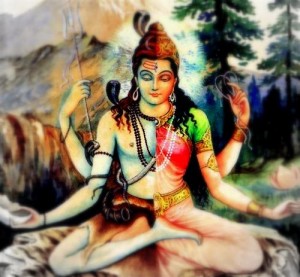 Ardhanareeswara-form-of-shiva-parvati[/caption]
Ardhanareeswara-form-of-shiva-parvati[/caption]
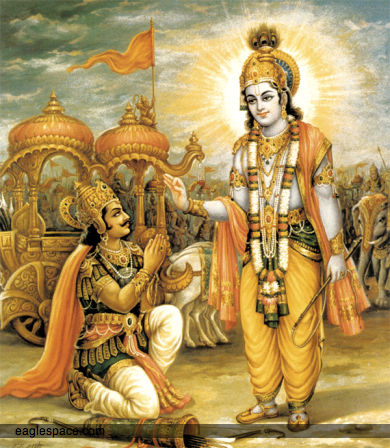 Arjuna[/caption]
Arjuna[/caption]

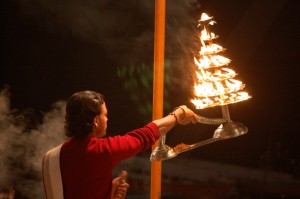 Bhagavad[/caption]
Bhagavad[/caption]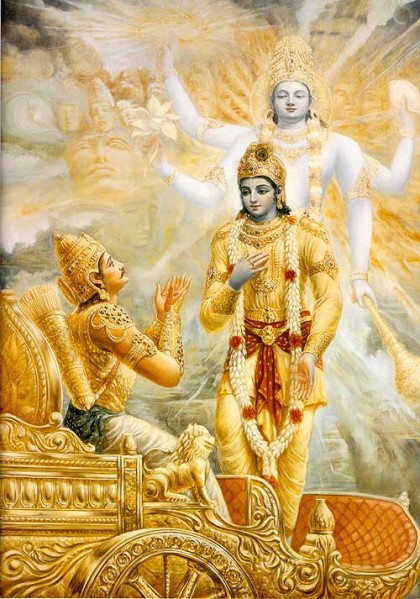
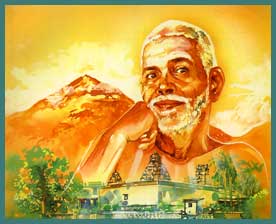
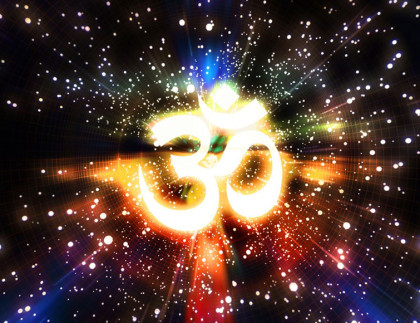 Brahman[/caption]
Brahman[/caption] Buddha[/caption]
Buddha[/caption]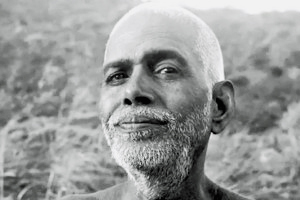
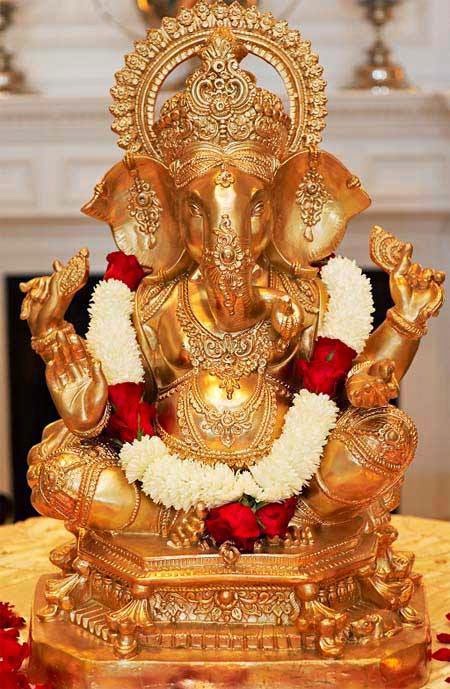

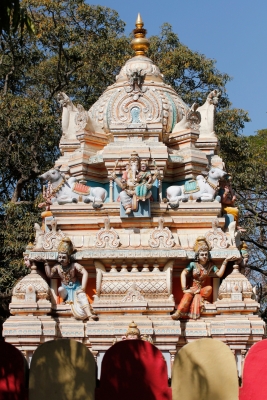 Goddess Sri Meenakshi Temple Tower
Goddess Sri Meenakshi Temple Tower
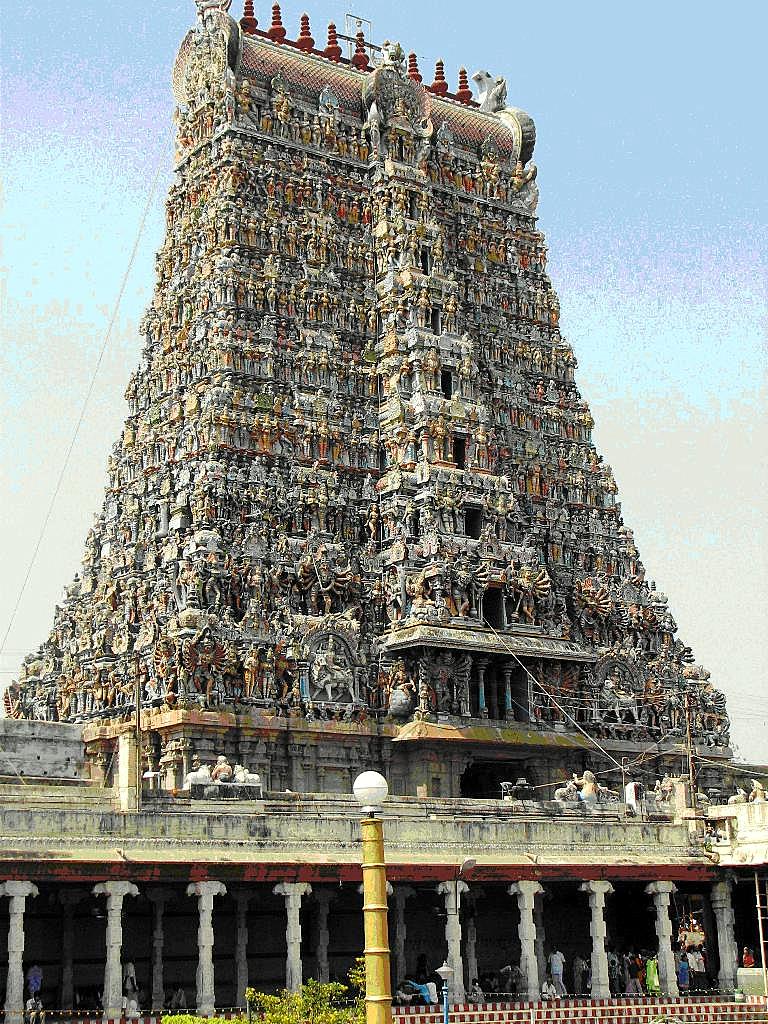
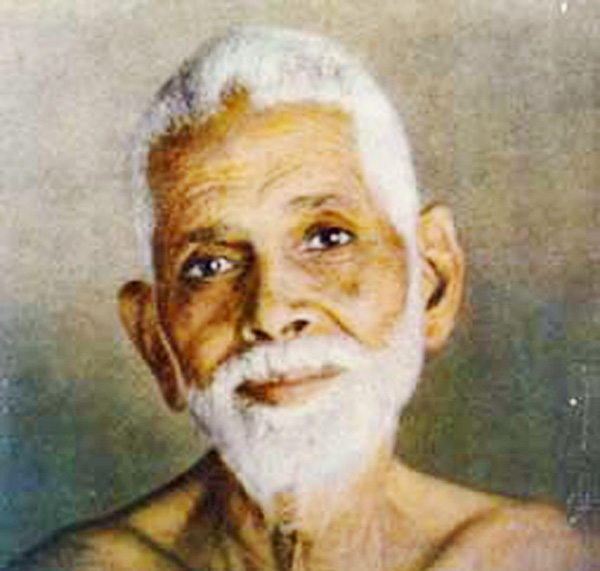
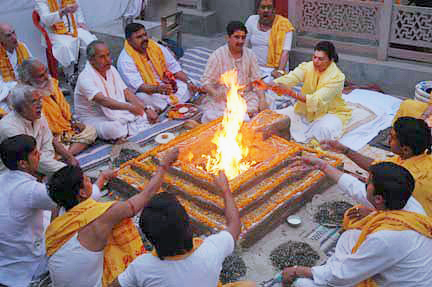 Homa[/caption]
Homa[/caption]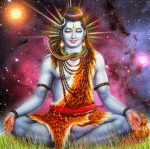

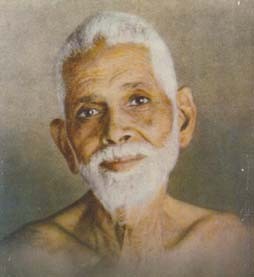
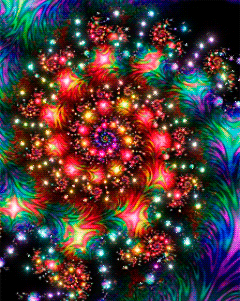
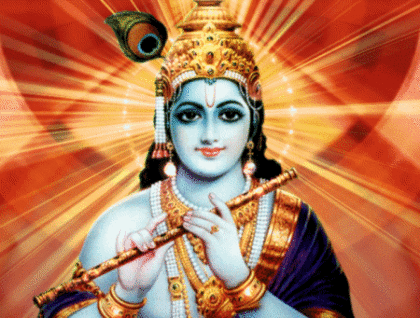




 [/caption]
[/caption]

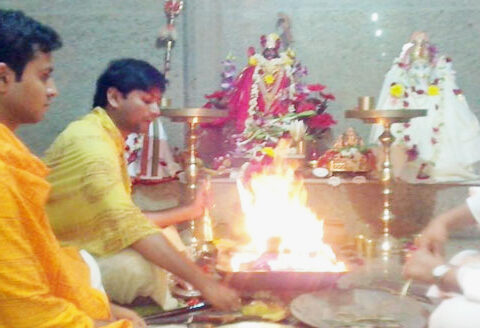 Pandit[/caption]
Pandit[/caption]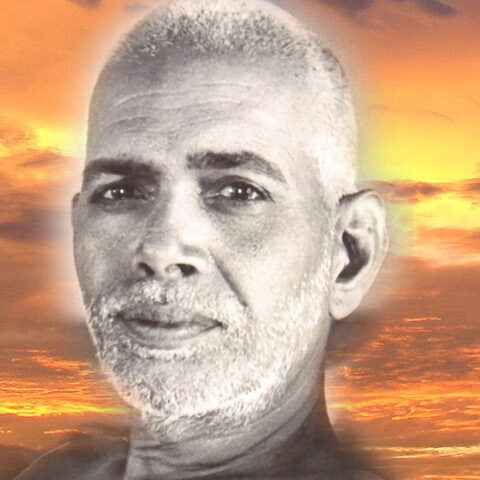

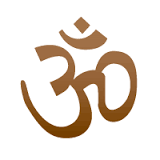 Aum or Om- Meaning: The All-Pervading Being which is the Beginning, Middle and End of all Beings
Aum or Om- Meaning: The All-Pervading Being which is the Beginning, Middle and End of all Beings
 Hindu Swastika Symbol - Meaning: Well-Being, Good Fortune
Hindu Swastika Symbol - Meaning: Well-Being, Good Fortune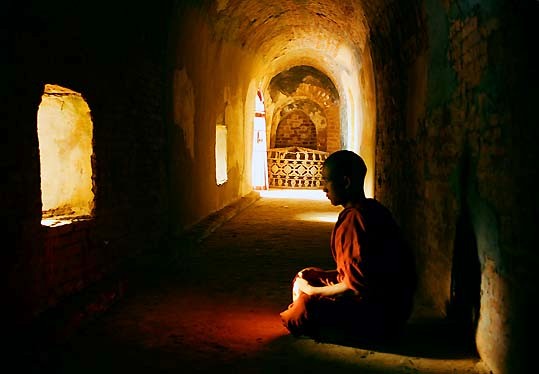


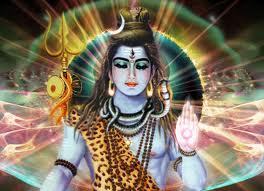 Lord Shiva[/caption]
Lord Shiva[/caption]
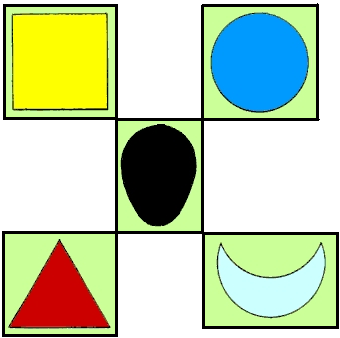


Be First to Comment